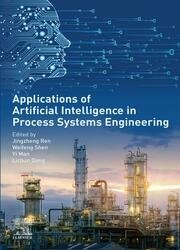 Название: Applications of Artificial Intelligence in Process Systems Engineering
Название: Applications of Artificial Intelligence in Process Systems EngineeringАвтор: Jingzheng Ren, Weifeng Shen, Yi Man
Издательство: Elsevier
Год: 2021
Страниц: 542
Язык: английский
Формат: pdf (true)
Размер: 53.8 MB
Applications of Artificial Intelligence in Process Systems Engineering offers a broad perspective on the issues related to artificial intelligence technologies and their applications in chemical and process engineering. The book comprehensively introduces the methodology and applications of AI technologies in process systems engineering, making it an indispensable reference for researchers and students. As chemical processes and systems are usually non-linear and complex, thus making it challenging to apply AI methods and technologies, this book is an ideal resource on emerging areas such as cloud computing, Big Data, the industrial Internet of Things and Deep Learning. With process systems engineering's potential to become one of the driving forces for the development of AI technologies, this book covers all the right bases.
One of the most important and popular ways to achieve the professional skills for AI is Machine Learning (ML). Basically, once the relative data is collected, next ML algorithms are applied to make feature extraction, model training, and evaluation. After the above learning procedure, effective models can be produced to make predictions and instruct the decision-making in the real world. It is summarized that the biggest advantage by ML is that trained AI models actively has some special skills and replaces the millions of lines of code lines to do us a favor in real world. There are lots of different methods targeting on different problem solutions in the content of ML, which are generally divided into supervised learning, unsupervised learning, and reinforcement learning (RL) according to the label information in the training dataset and the dynamic decision-making process. Of note is that the RL, a typical learning method with no prior label dataset, actively choose the next step (e.g., decision-making) to maximize long-term benefits according to the “good” or “bad” feedback in a dynamic environment with uncertainty. During the sequential decision-making process, reward and penalty are crucial elements to instruct the optimization. Besides, ML methods branching of support vector machine based on the statistical learning theory and artificial neural network (ANN) based on the biological neural cells’ connection have gain intensive attention in handling different problems, respectively. ANN architecture which looks like a thinking process of the human brain. The ANN model is composed of a large number of neural cells. Each node connects with each other and represents a specific output function which is called an activation function, and each connection between two nodes represents a weighted value for signal passing or calculations
Скачать Applications of Artificial Intelligence in Process Systems Engineering